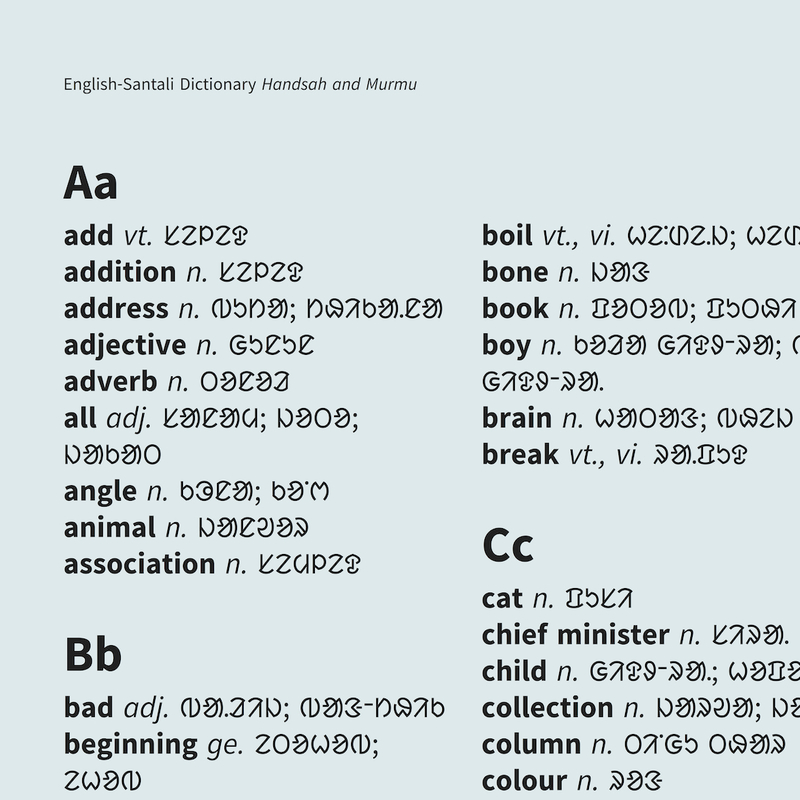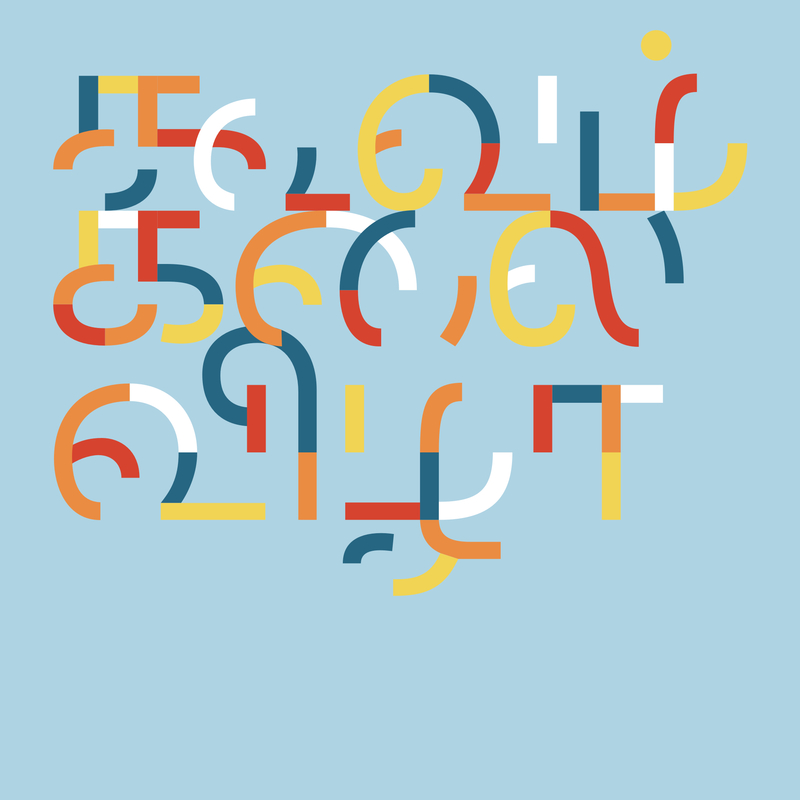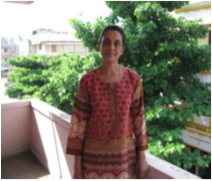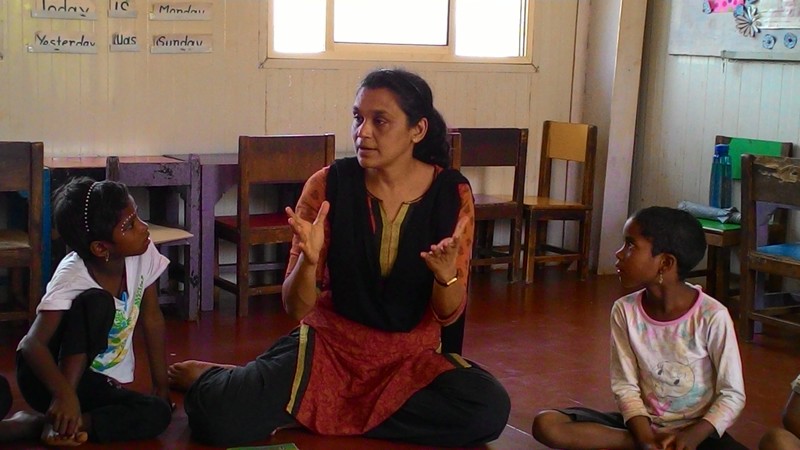Add some magic to your classroom with a STEM Classroom Library!
Posted by Remya Padmadas on October 03, 2017APPLICATION DEADLINE EXTENDED TILL NOVEMBER 10, 2017
In keeping with our mission of putting 'a book in every child's hand', Pratham Books is inviting applications for a STEM Library Grant. With an aim to ignite curiosity in children, we want to give away 200 STEM Classroom Libraries comprising of books that explore STEM (Science, Technology, Engineering, Mathematics) subjects and emotional intelligence.
Why STEM?
Sometimes, Maths and Science can be daunting for children. However, when concepts are presented in a fun and engaging manner children find it easier to grasp and retain them. There is a dearth of simple, informative books for young readers and access to these books will help children in their learning journey. Pratham Books has developed a special set of books that will enrich the child’s current curriculum and be a useful classroom aid for the teachers.
The books cover a diverse range of topics in Maths, Science, Technology, Environment, and Emotional intelligence. Some of our colourful books are: How Far is Far (estimation of distances), I Spy (subtraction), Bonda and Devi (robots), Ammachi’s Amazing Machines (simple machines and their use), Autumn, Monsoon, Spring, Summer and Winter (seasons of India), Up World, Down World (biodiversity of canopy forests), A Cloud of Trash (Cleanliness), A Helping Hand (inclusivity and accepting differences), Reethi and Mithu, Angry Akku (handling emotions).
These books are sure to evoke curiosity in children and encourage them to discover and ask questions about the world around them.
What is a STEM Classroom Library Kit?
The kit is a wall-mounted modular library unit that can be put up in any classroom or library. It consists of 100+ books, primarily in STEM subjects. Hindi or English books will be given away on the basis of medium of instruction in the classroom/learning centre.
If you wish to apply for this grant, kindly go through the Application Guidelines listed below and if you fulfill the criteria, do fill out the Application Form.
Guidelines for STEM Library Kit Application :
-
The Applicant should be a Non-Profit Organization registered under the Societies Registration Act of 1860 or Section 25 of Companies Act of 1956 or any other legal entity under regulations of Government of India OR a Government or Private School for children from low income communities.
-
The Applicant should be working with children from low income communities.
-
The Applicant should have a functioning reading program/ active library for children with fixed reading hours outside curriculum. This reading program must give children access and opportunities to read book, which are not a part of the set curriculum and are read for the pleasure of reading.
-
The Applicant should be working with children from Grades 3 to 8.
-
The reading program that the applicant runs should impact at least 150-200 children of the community.
-
The applicant would be required to sign a Memorandum-Of-Understanding with Pratham Books and give regular updates and feedback on the outcomes of the library received. The organisation would have to share two structured reports before March 2018. (a set format will be shared by Pratham Books)
-
The applicant should be open to collaborating with Pratham Books on a programmatic intervention as per need, requirement and interest. This could be any or all of these - digital intervention, volunteering opportunities, storytelling sessions, research related programs, marketing campaigns, opportunities for interaction with children.
-
Only online applications sent through THIS link will be eligible for the grant. E-mail or printed applications will not be accepted.
-
Preference would be given to organisations who have never received a grant from Pratham Books before.
-
The STEM Library kit from Pratham Books is available as single language kits with books in the following languages only : English and Hindi. The kits will be granted in the same language as the medium of instruction in the classroom or learning center.
Last day of application: 3rd November 2017
Applying for the grant- Please click on THIS link to apply for the library grant.
Points to be noted
-
A duly filled form is imperative for us to consider your application, so please don’t miss any columns while filling in your application.
-
Only applications received via THIS Google Form link will be considered. Applications sent via email or post will not be eligible for the grant.
-
Decision of Pratham Books will be final while selecting the final list of beneficiaries for the grant.
-
Pratham Books is not obliged to disclose the cause of acceptance or rejection of any application.
As the applications start pouring in, we promise to read and consider every application we receive. We are also looking for new partners in this journey, so organisations who have not yet benefited from any grant from Pratham Books before will get first preference.
Please write to us at [email protected] if you have any further questions or comments.
This grant has been supported by Oracle.
Be the first to comment.
Changing the typographic landscape of a country: one letter at a time
Posted by Remya Padmadas on December 14, 2016by Pooja Saxena

Pooja Saxena makes and works with typefaces, especially those in Indian scripts. See her work here, or follow her on Instagram.
My interest in designing typefaces in Indian scripts grew out of years of disappointment with the way most Hindi books I came across looked. Apart from a few exceptions, they looked like poor cousins of English books. Whether it was a children’s story book or a novel or magazine, there was usually the same drab typeface. Some letters didn’t look like what we were taught in school, on others the matras (vowel marks) didn’t arch at the right places. Overall, the books and the letters inside them had an air of neglect. They looked old and completely unexciting. When I first learned that designing typefaces was a real job, I thought here was the opportunity to change all that.

Cambay, Devanagari typeface designed by Pooja Saxena for Google Fonts
Changing the typographic landscape of a country as diverse as India is not a one-woman job, but every now and then a project comes by that has the potential to make a small difference. Two years ago, as a result of a conversation with Subhashish Panigrahi, the Access to Knowledge programme at the Centre for Internet and Society commissioned a Ol Chiki typeface family. The Ol Chiki script, about which I knew precious little at the time, is used to write the language Santali, which is spoken by over six million people in India and its neighbouring countries. At the time that we started working on this project, there was no Unicode compliant typeface available in the script, making it impossible for it to be used on computers and cellphones, and online in a consistent and future-proof way. We hoped to change that by designing a small, but useful typeface family (it comes in regular, bold and italics) along with input methods and keyboard layouts that would allow a person to type Ol Chiki text easily.

Guru Gomke, Ol Chiki typeface designed by Pooja Saxena with research inputs from Shubhashish Panigrahi,
for the A2K Programme at the Centre for Internet and Society.
This project was especially challenging because not only was Ol Chiki a completely unfamiliar script to me and Subhashish, but there was limited material available for us to consult. While designing a typeface in a script one reads and/or writes, or is at least familiar with, one’s experience with those letters can act as a guide. By writing them and seeing them printed in different fonts, in many people’s handwriting — some good, some bad — and on hand painted signs, one develops an instinct for identifying which parts of a letter make it recognisable. That way we know what parts of the letter can be exaggerated, and what others can be played down without compromising legibility. For an unfamiliar script, this visual vocabulary and the traditionally correct way of writing letters must be learned. Manuscripts, printed documents, handwriting manuals and samples, metal type, linguistic information about the script, feedback from native readers — all form parts of a puzzle that needs to be put together to design a competent typeface.
The story of Ol Chiki script is fascinating. The script is less than a century old, and was devised by Pandit Raghunath Murmu, who wanted to create a script that could accommodate all the features of the Santali language — something that the scripts used to write Santali so far had failed to do. Legend has it that he based the design of the letters on objects commonly found in the everyday environment of the Santals. Even though the script was created between 1920 – 1940, the Santal community has many myths about how it was created. One says that the script came to be at the time when the Earth itself was created, another says that the script was given as a divine gift to a learned man, Pandit Raghunath Murmu. It is after Pandit Raghunath Murmu, who is reverentially called Guru Gomke, that the Ol Chiki typeface that I designed was named. You can find out more about the Ol Chiki typeface and input methods project here.

Custom lettering for the Tamil branding of the Coovum Art Festival, designed by Pooja Saxena
If you’re interested in Indian type design and le ering, consider following the work of these exceptional designers — Noopur Datye, one of the co-founders of type design collective, Ek Type, who has designed custom typefaces TV channels like LifeOK; Kimya Gandhi, who is partner at Mota Italic, and recently designed an inventive Devanagari handwriting font; or Lipi Raval, whose flamboyant Gujarati typeface Mogra is a complete head-turner.
Be the first to comment.
Using Stories to Enhance Language and Literacy Skills
Posted by Remya Padmadas on March 29, 2016

Nabanita Deshmukh is a teacher, a teacher educator, and a writer of children’s stories and poems. She had been a consultant at Azim Premji Foundation, Pondicherry and has worked with government school teachers on interactive methods of teaching. Nabanita has been instrumental in introducing Stories and Language Games as a means for developing language skills in primary level children. She has also conducted workshops for teachers and students in Odisha, Pondicherry, Kerala and Arunachal Pradesh on creative writing, storytelling and classroom games and other alternate modes of classroom teaching such as the use of magazines for the improvement of English. She conducts teacher interactions on motivation and classroom management.
She contributes stories and articles to magazines and publishing houses like Chandamama, Bal Vihar, Children’s World, Children’s Choice, Children’s Digest, Pratham Books and Matrubhumi.
You can read her books 'Why Do Bees Buzz?' and 'Why Can't We Glow Like Fireflies?' on StoryWeaver.
I am just back from a long teacher training tour in Chattisgarh and western Odisha. The main focus of the workshops was the enhancement of language and literacy skills through interactive modes such as stories, poems, skits and songs. In this context Pratham's Adi Kahani series and the online Storyweaver platform came in handy.
STORYWEAVER
Stories from this portal were shown to a group of primary school teachers and teacher educators from various states of India. Here is an example of how one of the presentations took place. The session went through three stages: pre-viewing, while-viewing and post-viewing. The 'First House' story was chosen for the demo.
In the pre-viewing stage, I first showed the cover page to the participants and they all had to guess what the story was all about and where it was set. This pushed the teachers to observe the illustrations and the printed details carefully. Later they guessed that the story took place in a forest and it was about two tribal men.
Pre-reading or pre-viewing stages always help break the ice and familiarise readers with unfamiliar settings, characters and vocabulary. If teachers used prediction like I had done with the cover page of the book, students would surely show more interest in reading a story.
In the while-reading stage, I projected the first page of the book and asked the following questions:
1. In which state of India do you think this story is taking place?
2. Which creatures do the characters meet when they come out of the cave?
3. What advice do these creatures give them? (Answers to be given using direct speech)
4. What kind of house do you think the characters built eventually? (Description)
These questions were asked to help participants use communicative English (Q-3), imaginative skills (Q-2&4), logic (Q-3) and geographical knowledge (Q-1)
After getting the answers from the participants, the entire story was projected on screen and the participants enjoyed reading it. They also loved the colourful illustrations and the different options the story presented. I finally read out the paragraph on the Singpho tribe printed at the end of the book and made the teachers use atlases to locate Arunachal Pradesh and its physical features on the map.
Some teachers even attempted to translate the first few lines of the story in their own mother tongue-Kannada, Tamil, Bengali and Chattisgarhi.


ADI KAHANI SERIES
The Adi Kahani stories in the Kui language were used in Odisha with primary school teachers who taught children of the Munda tribe. This tribe speaks the Ho language. Despite not knowing Kui, the tribal and the non-tribal teachers reacted favourably to the stories. For example in the stories of the fox and the pitcher and also in the fox and the chicken, the teachers appreciated the use of local settings, objects and characters. They thought these would help children understand the story better as the surrounding is familiar-rivers, foxes, cowherds, women carrying wood, earthen pots are all so familiar to village children no matter to which tribe they belong to!
The story of how the rabbit got its long ears became an instant favourite among Munda teachers and many felt the folktale could be made into a skit.
It was a great experience using Pratham Books and the Storyweaver platform during my training. More Odia translations of stories and Munda tribe folktales written in English and then translated into different languages will be most useful. I just came to know that the Ho language has a script. Heartening, isn't it?
Be the first to comment.